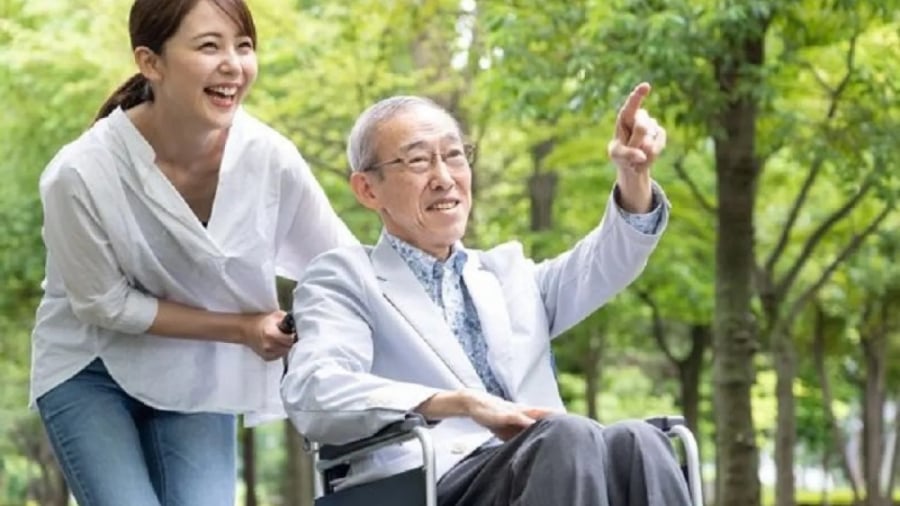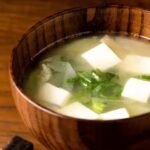Strolling through the streets of Tokyo, one might notice the hurried figures of suited office workers, rarely seen stepping into a gym. Yet, the healthy snacks on convenience store shelves are always flying off the racks.
Even more remarkably, Japan boasts a cancer incidence rate that is 20% lower than that of the United States, along with one of the lowest cardiovascular mortality rates in the world. So, what’s the secret behind this phenomenon? Read on as we uncover four intriguing reasons revealed by doctors that will give you pause for thought!
I. Culinary Philosophy: Nature’s Pharmacy on Your Plate
At an izakaya in Osaka, 70-year-old Mr. Watanabe holds a piece of sashimi and shares, “We eat fish not just for its taste but for our health.” Three golden rules of the Japanese diet have become deeply ingrained in their culture and DNA:
“The Rainbow Plate” with minimal fat and maximal fiber. Japanese people consume at least 30 different types of food daily, including red salmon (source of Omega-3), blue seaweed (fiber), golden pumpkin (β-carotene), white tofu (plant protein), black sesame seeds (antioxidants), and a bowl of brown rice to cover all seven major nutrient groups. This diet helps reduce the risk of colorectal cancer by 40% and breast cancer by 27%.
The 80% Full Philosophy – A Smart Survival Strategy. In traditional Kyoto restaurants, portion sizes are kept small, leaving diners feeling slightly unsatisfied. However, this is the “80% full” principle, which means eating only until you’re about 70-80% full. It reduces gastric emptying time, enhances insulin sensitivity, and prolongs lifespan. The renowned long-living people of Okinawa consume 20% fewer calories than Americans and have a 1.5 times slower aging rate.
The Gut Revolution with Fermented Foods. Fermented dishes like miso soup, natto, and kimchi diversify the Japanese gut microbiome by over 30% compared to Europeans and Americans. Studies published in Nature journal reveal that balancing the “gut-brain axis” can reduce the risk of anxiety and depression by half.

II. Healthcare System: National Defense with Early Screening and Treatment
At the National Cancer Center in Tokyo, 45-year-old Ms. Sato has just completed a gastric cancer screening endoscopy. Japan’s healthcare system functions like a well-oiled machine, prioritizing the well-being of its citizens:
Nationwide Cancer Screening Network. From the age of 40, citizens are offered free screenings for 12 common cancers, including stomach, lung, and breast cancer. Companies are mandated by law to provide health checkups for their employees. The screening rate is maintained above 70% annually. The early detection rate for stomach cancer reaches 70%, with a five-year survival rate exceeding 80%.
Family Doctors – Guardians of Health. Every community has family doctors who monitor health throughout life, from childhood vaccinations to chronic disease management. Seniors aged 65 and above receive free annual checkups, including cognitive and nutritional assessments. The “prevention is better than cure” mindset helps keep Japan’s healthcare expenditure at just 11% of GDP, while achieving one of the highest healthy life expectancies globally.

Affordable Healthcare through Health Insurance. Citizens pay a maximum of 30% of the treatment cost for minor illnesses like the flu, while cancer treatment is reimbursed up to 90%. The government subsidizes low-income individuals to ensure equal access to quality healthcare. This system encourages early detection and prevents minor illnesses from becoming more serious.
III. Stress Management: Surviving and Thriving in a High-Pressure Society
Under the Tokyo Tower, suited office workers line up for fresh coffee, while in an ancient temple in Kyoto, silver-haired elders meditate beneath blooming sakura trees. The Japanese have a unique approach to handling stress:
Psychological Massage from “Small Joys.” Simple pleasures like a rice ball from a convenience store, a warm drink from a vending machine, or the chime signaling an arriving train create an “emotional buffer” that helps Japanese people maintain emotional balance. A study published in the “Journal of Positive Psychology” found that writing down three enjoyable moments each day reduced the risk of depression by 25%.
Bathhouse Culture – Healing for Body and Mind. In the evenings, hot steam rises from the baths of Japanese homes. Water temperatures of around 40℃ help dilate blood vessels and promote blood circulation, similar to light exercise. Research by the University of Tokyo indicates that elderly individuals who bathe at least three times a week have a 30% lower risk of cardiovascular disease.
The “Safety Valve” for Workplace Stress. Despite the high-pressure work environment in Japan, many companies offer psychological counseling and yoga classes for employees. The government has also enacted the “Work Style Reform Law” to curb overtime hours, giving younger workers time for self-care and family.
IV. Daily Activities: Invisible Movement for Sustained Health
In Osaka’s markets, the sprightly 70-year-old Mrs. Tanaka walks briskly with her vegetable basket, saying, “I walk 10,000 steps daily, which is far better than going to the gym.” The Japanese maintain their health through simple, everyday activities:
The “Walking Revolution” on the Commute. Tokyo office workers average 8,000 steps daily, burning about 300 calories. Dedicated lanes for fast walkers in train stations and step counters on stairs subtly encourage physical activity. A study in the British Journal of Sports Medicine found that older adults walking 5,000–7,000 steps daily had a 30% lower mortality rate.
Unexpected Benefits of Chores. Tasks like sweeping tatami mats, washing dishes, and sweeping the yard keep the Japanese 40% more active than Americans. According to research from Nagoya University, sweeping for 30 minutes daily can reduce the risk of cardiovascular disease by 24%.
The Standing Culture – A Metabolic Booster. Japanese schools promote “standing teaching,” and many offices have adopted standing workstations. A study by Waseda University found that standing for three hours daily increases metabolic rate by 15%, equivalent to burning 10 kg of fat in a year.
While many break a sweat in gyms, the Japanese have crafted a legend of longevity through their wisdom in living. They demonstrate that health is not the privilege of a select few but the outcome of a societal system encompassing diet, healthcare, stress management, and everyday activities. This is a reminder that health is cultivated daily through the simplest aspects of life.
7 Anti-Aging Tips That Actually Work
Aging is an inevitable process, but that doesn’t mean you can’t age gracefully and maintain a vibrant, youthful life. The anti-aging tips mentioned above can significantly slow down the aging process and enhance your overall well-being. Incorporate these tips into your daily routine, and you’ll be on your way to embracing a younger and more energetic version of yourself.



































